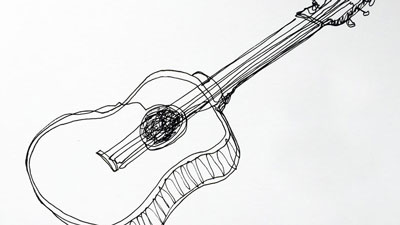
Now that you know what contour line is and how it can help your drawing let’s take a lookĪt the flip side of the contour coin.

Look at the both the outer and dominant inner contours of your subjects to see if they are interacting negatively with each other. When setting up a still life to draw look at the outline shape to pick the most interesting angle of your subject.īe aware of bad tangencies (the line of one object awkwardly running into another object)Įven if you have drawn beautiful subjects, tangencies can easily wreck your drawing and make it look wrong. We will talk about composition in detail later but here are some good tips to remember. Inner contour elements different ways until you find just the right level of detail forĪnother very important use of the contour is with composition. Handle these elements will become part of your personal style. The essentials and often eliminate any pattern or texture. I like to simplify a lot of the inner contours to just Will help you to identify the large overall shape and give you an easier Doing yourĪfter I get the main block-in I can start breaking the largeįorm into smaller inner shapes, making corrections along the way.īeing able to see the outer contour of your subjects I start by drawing the big general shape the best I can.īe aware that this is just my best first attempt. (in an upcoming lesson we will look in detail at the block-in.) Simplify the shapes and help you see the outline more clearly). Now focus on just the big outer shape (squinting will It’sĮasy to get overwhelmed by all the different lines and shapes. If you can see the big outer silhouette you can drawĪ simple containing shape to fit your subject into. The key is to look past the inner contours at first and focus on Now that we have a definition for contour line, how do we But for now just be aware that shadows are a separate drawing element. We will get into detailed lessons about shadows in Drawing Essentials: Level 3. Shadows are their own element and are very important in showing the form of objects.

In the hands of an experienced artist, contour lines can be used to deliver an astonishing amount of visual appeal. To change the value of a colour you follow the Colour Mixing Rules.I don't consider shadows to be contour lines at all. Contour drawing is a highly essential technique in art because it is the foundation of drawing.It is widely regarded among art schools as arguably the most effective discipline for any beginner artist. Yellow would be near the top (light end) of the scale while purple would be found near the bottom end. Each colour falls on the value scale from light to dark. Value is how light or dark the colour is, as discussed in Element 5 above. The chroma of a colour is not the same as its value.Ĭolours also have value. Too much saturated colour can give a garish result. In painting only small amounts of saturated colours are usually used as accents. The more pure the colour is (less of other colours mixed in), the more intense or saturated it is. (Hue the name we give a colour.)Ī colour has intensity called chroma, also known as saturation, brightness or purity. There are several other and each works well in different situations.Ĭolour is described by its hue – red, green etc. Another popular scheme uses Cyan, Magenta and Yellow as the primaries.

The most common is the Red, Yellow, Blue model. There are various colour schemes which define the primaries. Colour theory is based on the colour wheel, colour value and on which colours work well together - also called colour schemes. It’s only a theory and can’t be proven but it is nevertheless useful to the artist. The colour wheel shows primary colours, (colours that can’t be mixed), secondary colours (made by mixing two primaries) and tertiary colours (made by mixing a primary and secondary colour).Ĭolour theory helps the artist to mix desired colours from primary colours. The colour wheel was developed by Isaac Newton who took the colour spectrum and bent it into a circle. In art, colours are arranged on a colour wheel. Contour bunding or contour farming or Contour ploughing is the farming practice of plowing and/or planting across a slope following its elevation contour lines. Colour is created when light is reflected into the viewer’s eye.


 0 kommentar(er)
0 kommentar(er)
